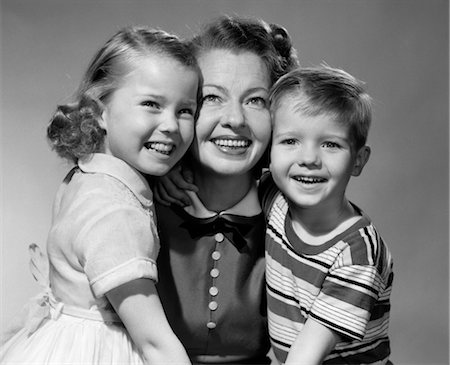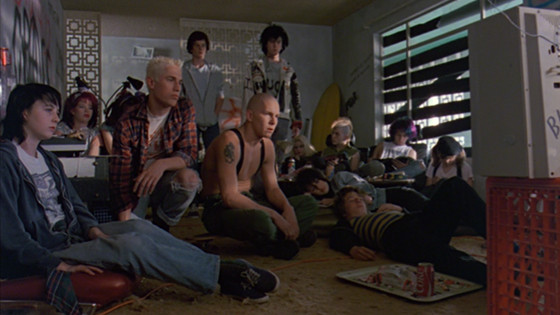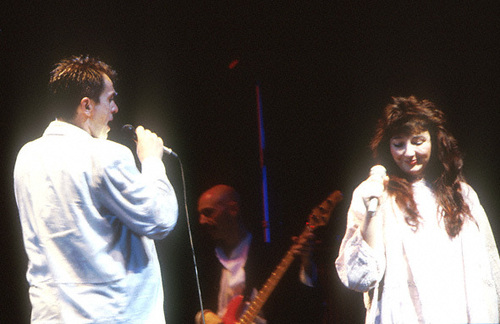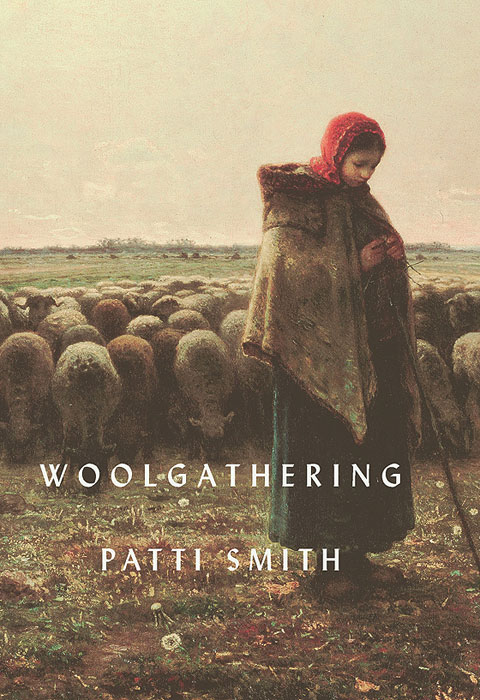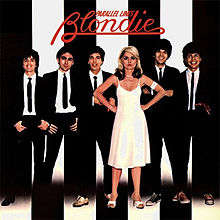 How we attach ourselves to music is based on how we come across it, and who or where we are when we first hear it. For a long time I didn’t get Blondie. Awhile back I picked up a copy of Parallel Lines. For a few days it was the only record I wanted to hear. It was the right time and the right context. I’d like to take some time to share with Women In Rock why Blondie and this record are so important in the history of punk, women and my life as an audiophile.
How we attach ourselves to music is based on how we come across it, and who or where we are when we first hear it. For a long time I didn’t get Blondie. Awhile back I picked up a copy of Parallel Lines. For a few days it was the only record I wanted to hear. It was the right time and the right context. I’d like to take some time to share with Women In Rock why Blondie and this record are so important in the history of punk, women and my life as an audiophile.
I started buying records around 3rd grade. I listened to the radio and bought 45’s at department stores. I was a child of the 70’s, so one of the first singles I bought was Blondie’s “Heart of Glass”. I didn’t know about CBGB, punk or new wave. It was a disco song to me. Something I heard at Skateworld when I was a chubby preteen hanging by the pinball machines. I bought the record and it haunted me. It was different in so many ways. The sleeve had a picture on it. Most singles only had paper sleeves with big holes in them so you could read the label. Blondie had a full color sleeve with a picture of the band. It had a huge sound that filled the room, but in the center was this vulnerable voice. There was a joyous quality to the music, but the lyrics were about breaking up. I didn’t have the vocabulary then, but the incongruity of the lyric and the upbeat music along with the jaded detachment of Debbie Harry’s voice resonated perfectly with how I felt watching older kids pair up for the moonlight skate while I sat in the shadows sipping a soda. This image of the ‘heart of glass’ that is transparent and fragile while simultaneously cold and hard was one of the first metaphors that offered premonitions of the bittersweet wisdom that lay beyond childish innocence.
Blondie’s success on the charts, their use of Disco in “Heart of Glass” and their further use of reggae in “The Tide is High” and of rap in “Rapture” lured me into thinking of them as a pop band. That’s why when I started really learning about the history of punk I found it so incongruous that Blondie was part of the same scene that spawned The Ramones and Richard Hell. I was looking back through the filter of hardcore and thinking that punk was all about fast and loud. My conclusion was that Blondie were a bunch of new wavers who latched on to the punk scene until they could sell out. Now that I’m older and my tastes and viewpoint have matured I see that Blondie was essential to understanding how the early CBGB’s punk scene fit together. Blondie weren’t pop; they were Pop Art. Before there was Blondie there was The Stilettos.
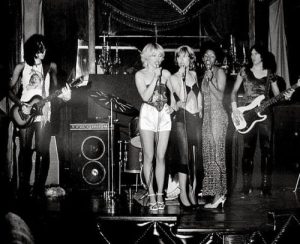
The Stilettos were a homage to sixties girl groups, especially the The Shangri-Las whose style and songs celebrated a “bad” girl image. The birth of punk came out of an art school take on rock and roll that was simultaneously a reaction against the artiness of prog rock bands such as Yes and Emerson, Lake and Palmer and a celebration of the kitschiness of bubblegum, garage rock and Phil Spector. It was this aesthetic sensibility that united bands like Blondie, The New York Dolls, The Patti Smith Group, The Talking Heads, Television and The Ramones. With this in mind I can view Richard Hell’s ripped T-shirts, spiked hair and safety pins as an artistic take on fashion through anti-fashion. And what is more arty and literary than when silence replaces the adjective in the phrase “I’m a member of the ____ generation” in The Voidoid’s anthem? The Ramones especially fit into this pop art aesthetic. Their sound and look were carefully calculated to promote them as ignorant rock and roll brutes while their lyrical use of low brow pop culture iconography such as the exploitation films “The Texas Chain Saw Massacre” and “Freaks” harkens back to Lichtenstein’s comic books and Warhol’s soup cans. This reassessment of early punk rock as deliberate pop art leads me to believe that Blondie were not outliers in the scene, but movers, shakers and trend setters
Debbie Harry was old by punk rock standards. She was born in 1945 so when the Stilettos came together in ‘74 she was pushing 30. (Check out their song “Anti-Disco” on YouTube to hear the punk roots of Blondie.) She had been in a folk rock band called Wind in the Willows in the sixties and before that had been a Playboy Bunny. She knew her way around the music biz and sexism. As a front person she immediately stood out. It was in The Stilettos that she met musical and romantic partner Chris Stein. The band gradually morphed into Blondie and the name came from the catcalls that Debbie got on the streets from men. This name change drew attention to Debbie as a front person, but also played against her stage image. She was a smart song interpreter not a dumb blonde. As they got famous she became a new type of female pop star. She was smart, tough and older than other female pop stars, but she was still seen as glamorous and a fashion icon.
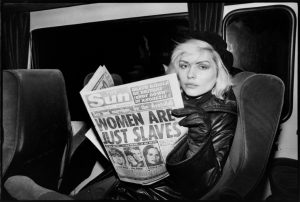 The smartness of this band is what makes Parallel Lines such a great album. Side one opens up with the sound of a telephone to introduce “Hanging on the Telephone.” This introduces the theme of the album–communication and missed communication. This theme is evident in the title track. “The lines I have written that read between/ The lines on the pages/ The lines on the screen/ Of lines spoken-I say what I mean/ It’s parallel lines that will never meet.” This theme gives the album a sense of unity. The musical variety makes each song stand out. Consider the sci-fi prog rock aspect of “Fade Away and Radiate” and how it serves the subject matter of wasting away in front of a television. Think about how aggressive Debbie sounds in “One Way or Another” and how coy she sounds in “Pretty Baby” (a song about the exploitation of teen actress Brooke Shields.) “I Know But I Don’t Know” may be the weakest track, but it too serves a purpose. Not only does it tie into the album theme, but the lack of Debbie Harry on the track actually draws attention to her presence in the other songs. The closing track is clever too. How many bands close an album by telling the audience to “Just Go Away.” The characters on this album desperately want things to happen, but they rarely get what they want, and if they do it doesn’t satisfy. In the end I must say that Blondie isn’t a punk band or a pop band. They’re just a band that uses everything they can get their hands on to serve the song.
The smartness of this band is what makes Parallel Lines such a great album. Side one opens up with the sound of a telephone to introduce “Hanging on the Telephone.” This introduces the theme of the album–communication and missed communication. This theme is evident in the title track. “The lines I have written that read between/ The lines on the pages/ The lines on the screen/ Of lines spoken-I say what I mean/ It’s parallel lines that will never meet.” This theme gives the album a sense of unity. The musical variety makes each song stand out. Consider the sci-fi prog rock aspect of “Fade Away and Radiate” and how it serves the subject matter of wasting away in front of a television. Think about how aggressive Debbie sounds in “One Way or Another” and how coy she sounds in “Pretty Baby” (a song about the exploitation of teen actress Brooke Shields.) “I Know But I Don’t Know” may be the weakest track, but it too serves a purpose. Not only does it tie into the album theme, but the lack of Debbie Harry on the track actually draws attention to her presence in the other songs. The closing track is clever too. How many bands close an album by telling the audience to “Just Go Away.” The characters on this album desperately want things to happen, but they rarely get what they want, and if they do it doesn’t satisfy. In the end I must say that Blondie isn’t a punk band or a pop band. They’re just a band that uses everything they can get their hands on to serve the song.

